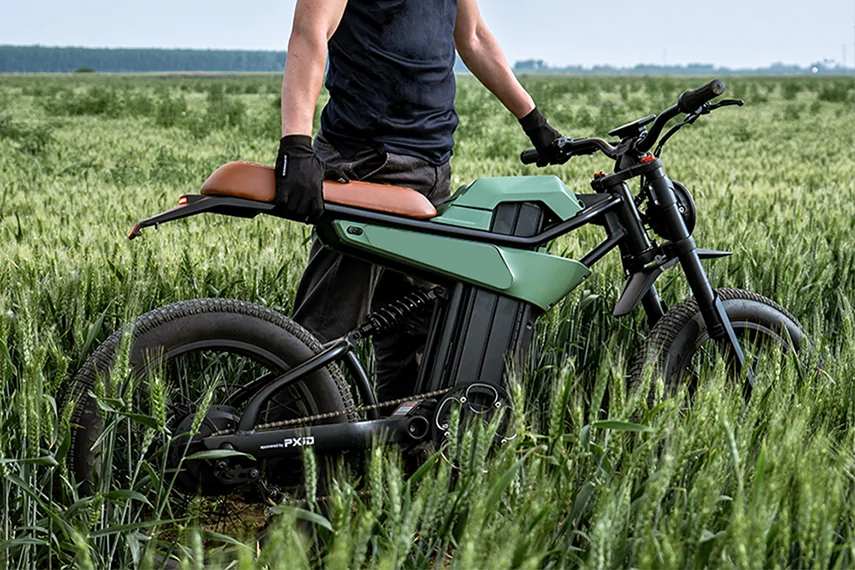Electric motorcycles are gaining popularity due to their environmental benefits, cost-efficiency, and technological advancements. Among the various motor types available, hub motors stand out for their unique design and advantages. This guide provides an in-depth look at electric motorcycle hub motors, offering riders a comprehensive understanding of their functionality, benefits, drawbacks, and practical considerations.

Hub motors are electric motors integrated directly into the wheel hub, eliminating the need for a chain, belt, or drive shaft. This direct-drive configuration is what sets hub motors apart from mid-drive motors, which are typically mounted near the bottom bracket of the bike and transmit power through the drivetrain.
There are two primary types of hub motors used in electric motorcycles:
One of the primary advantages of electric motorcycle motor is their simplified design. With fewer moving parts compared to mid-drive systems, hub motors require less maintenance. The absence of chains, belts, and gears reduces wear and tear, making them more reliable and easier to service.
Hub motors operate more quietly than their mid-drive counterparts. The direct-drive nature of these motors means there are no noisy gears or chains, resulting in a smoother and quieter riding experience. This is particularly appealing for riders who prefer a peaceful ride without the mechanical noise often associated with traditional motorcycle engines.
Many hub motors come equipped with regenerative braking capabilities. This feature allows the motor to act as a generator during braking, converting kinetic energy back into electrical energy and recharging the battery. Regenerative braking not only extends the range of the motorcycle but also reduces wear on brake pads and discs.
Hub motors can improve traction and stability, especially in slippery conditions. Since the motor directly drives the wheel, there is less chance of wheel slippage compared to chain-driven systems. This is particularly beneficial for off-road riding and adverse weather conditions.
The compact and integrated nature of hub motors allows for cleaner and more streamlined motorcycle designs. Without the need for external chains or belts, designers can create sleeker and more aesthetically pleasing motorcycles.
One of the significant drawbacks of hub motors is their impact on weight distribution. The added weight in the wheel can make handling less agile and more challenging, especially at low speeds. This can affect the overall balance and maneuverability of the motorcycle.
Compared to mid-drive motors, hub motors typically offer less torque. This can be a disadvantage when it comes to climbing steep hills or accelerating quickly. Geared hub motors can mitigate this issue to some extent, but they still generally fall short of the performance offered by mid-drive systems.
Hub motors can have issues with heat dissipation, especially during prolonged periods of high power output. The enclosed nature of the motor can make it challenging to manage heat effectively, potentially leading to overheating and reduced performance over time.
Since the motor is integrated into the wheel, maintenance tasks like changing tires or fixing flats can be more cumbersome. Riders need to be more careful during these procedures to avoid damaging the motor or its connections.
When choosing a hub motor for your electric motorcycle, consider your riding style and the terrain you will primarily be riding on. Hub motors are excellent for urban commuting and flat terrains where their benefits, such as low maintenance and quiet operation, are most noticeable. However, if you plan to tackle hilly or off-road terrains, you might need to consider a more powerful geared hub motor or even a mid-drive motor for better performance.
The power of the hub motor and the capacity of the battery are crucial factors that influence the motorcycle's performance. Higher power motors provide better acceleration and top speed but consume more battery power. Therefore, balancing motor power with battery capacity is essential to ensure sufficient range for your rides.
If regenerative braking is a feature you desire, ensure that the hub motor you choose supports this functionality. Regenerative braking can significantly enhance the efficiency and range of your motorcycle, especially in stop-and-go urban environments.
Ensure that the hub motor is compatible with your motorcycle's frame and wheel size. Some hub motors are designed for specific wheel sizes and may require modifications or special adapters for installation. Additionally, consider whether the motor system allows for customization and upgrades, such as swapping batteries or adding accessories.
While hub motors can be cost-effective in the long run due to their low maintenance requirements, the initial cost can vary significantly. Assess the overall value by considering the motor's durability, performance, and features. Investing in a high-quality hub motor can provide long-term benefits and a more enjoyable riding experience.
Wheel hub motors have huge advantages in terms of simple structure, low maintenance requirements, etc., but their own installation restrictions also bring drawbacks. By gaining a comprehensive understanding of wheel hub motors, riders can obtain a pleasant riding experience.
Leave A Comment